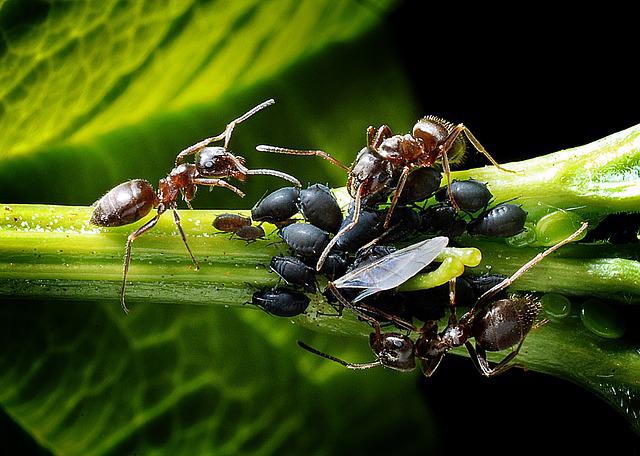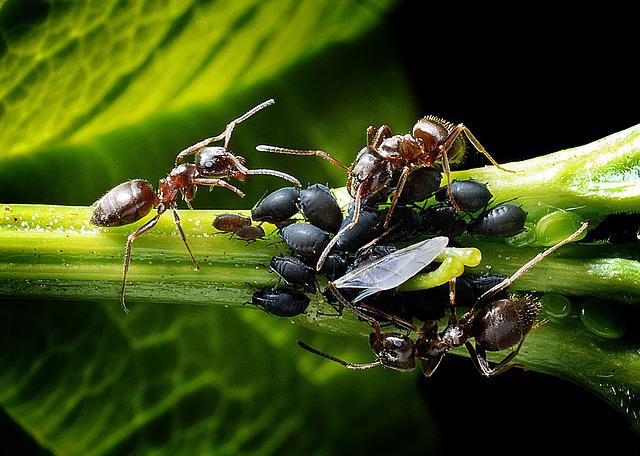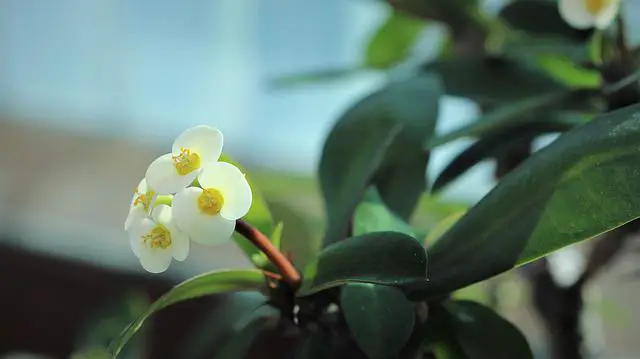Basil is a top favorite plant for many people to grow, and it is often fairly resistant to pests and diseases – but not always. That means you need to be prepared to deal with problems when you grow the basil, including spots on the leaves.
White spots on basil leaves are often caused by insects or fungal infections, and these can cause major problems. They will stress your basil out, stop it from growing, and possibly even kill it in some severe cases. You will need to take action to save the plant. Here are four main causes of white spots on basil leaves and their solutions that you can take to keep your basil plants healthy and thriving.
White Spots On Basil Leaves

White spots on basil can be off-putting and they are very annoying if you put time and energy into growing your own basil at home. Finding out the cause may help you to solve the problem and help your basil recover.
There are a few different causes of white spots, including:
- Aphids
- Thrips
- Powdery mildew
- Nutrient deficiencies
Any of these things can cause the leaves of your basil plant to develop white spots, and you should look out for them if you think the plant is struggling. Each has a different treatment, so it’s important to correctly diagnose the cause before you start trying to fix it.
1) Aphids

Aphids are a common basil predator, and they seem to love munching on this aromatic plant. They are a very common cause of white spots on basil leaves, and they will often come back again and again, so you need to be constantly on the lookout for them.
You can check for aphids very easily by simply inspecting your basil plant. Aphids are tiny green or white flies, and they are usually clustered on the undersides of the leaves or stems. They will attack the basil’s young leaves, stressing the plant out and causing white patches.
You can get rid of aphids by spraying your basil with soapy water. Mix some dish detergent with some lukewarm water and put it in a spray bottle, and then liberally spray the basil. Alternatively, dunk the foliage of the basil in a sink full of soapy water and rinse it around. It often takes several attempts to get rid of a bad aphid infestation.
You can also use things like neem oil, but soap and water is usually enough to kill most aphids.
2) Thrips
Thrips are a lot harder to spot than aphids, but they are another serious pest that can leave spots on the leaves where they have been feeding. They are less than a millimeter long even once they reach adulthood, so they aren’t easy to see.
A bad thrips infestation will leave your basil looking very sick, so you need to address these pests as soon as you can. They can again be dealt with by spraying the basil with dish detergent, or rinsing it with soapy water. Alternatively, you can wipe the basil’s leaves down with diluted neem oil, and this will kill them.
Simply mix dish detergent, water, and neem oil together, and use a cloth to wipe the leaves with the solution. Again, several treatments may be needed to kill a bad thrips infestation.
3) Powdery Mildew
Powdery mildew can cause white spots on your basil’s leaves. These will usually spread across the surface of the leaves, making it look as though the plant has been laced with frost. It can rapidly spread over new growth, so you’ll need to take quick action to get rid of it.
You should not eat leaves that have been affected by powdery mildew, and that means you need to make sure you get rid of it before you use your basil plant. You may be able to get rid of powdery mildew using baking soda, milk, a commercial fungicide, pruning, or neem oil.
You might want to try multiple methods, but milk is a popular one. Mix 1 part milk to 3 parts water and spray the leaves liberally. You can also prune off any badly affected parts of the basil plant.
If your basil seems to be prone to powdery mildew, make efforts not to splash the leaves with water when you water the plant.
4) Nutrient Deficiencies

Occasionally, white spots on your basil’s leaves may mean that the plant isn’t getting enough nutrients. Basil plants are not generally heavy feeders and they prefer poor soil, but if the soil is very deprived, their leaves will often develop white spots.
This tends to happen because they don’t have enough nutrients to build healthy leaves and create chlorophyll for them. If your basil has been growing in the same soil or pot for years without fertilizer and then white spots start developing, it may be time to give the plant some food.
You can fertilize basil with a diluted, all-purpose fertilizer once a year or less often. However, be careful not to over-feed it, or its leaves will burn.
5. Environmental Factors
Constant exposure to direct sunlight can cause white spots to appear on your basil leaves. Frost is also a major factor that affects these plants. While they do not thrive in hot weather, basil plants don’t do well in chilly environments. Leaf discoloration, including white spots on its leaves, is one of the signs of distress in the plant.
Additionally, too much exposure to chemicals, including herbicides, can cause this problem.
Provide the basil plants with moderate sunlight, and don’t place them in a chilly environment. Also, apply pesticides and other chemicals to it once in a while in moderate quantities.
6. White Flies
Due to their feeding habits, white flies can cause white spots on basil leaves. After feeding on the sap of the basil plant, these tiny insects produce honeydew on its leaves. Since the honeydew is sticky, it attracts different particles, such as dust and debris, which causes white spots.
Get rid of white flies before they infest your basil leaves as fast as you notice them. While they don’t attack the plant directly, they can attract other pests to your healthy plants. They can also provide an environment for the fungus sooty mold to attack your basil plant.
Summary
White spots on basil leaves can be caused by a variety of different issues, and if you see them forming, you should investigate to find out what’s wrong. On the whole, basil plants are resilient and do not suffer too much from diseases and pests – but they are not impervious to either.
See a previous post: Etiolated Cactus: How to Recognize, Fix, and Prevent It
Frequently Asked Questions
Why does my basil plant have white spots?
There are quite a few potential causes of white spots on the foliage of basil, including things fungal infections. Several kinds of fungi will attack a basil plant, and powdery mildew is a common issue on the leaves.
Being kept in a damp, warm, airless environment will make your basil far more susceptible to fungal infections, and you should be aware of the early signs. If you see them, remove the affected leaves and help the basil to dry out a bit. If the plant is getting fungus, it is likely wetter than it should be.
Why does my basil plant have spots on the leaves?
If your plant has brown spots appearing on its leaves, it may have been affected by a disease known as Fusarium Wilt, according to GardeningKnowHow. This can cause wilting, twisted stems, brown spots, and poor growth. You will need to get rid of a basil plant that has this disease, because there is no cure.
Spots may be caused by other problems too. Even things like sun scorching can cause spots to appear on the basil’s foliage. Brown spots are particularly common, so spend some time determining the cause before you decide how to treat the plant.
How do you treat white spot on herbs?
If your basil is suffering from powdery mildew, you may want to try treating this with baking soda. Plants with this disease look as though they have had flour sprinkled on the leaves, and it is more likely to be a problem if the plant isn’t getting enough sun.
Move your basil plant into a sunnier spot and try mixing a teaspoon of baking soda into a quart of water, and then spraying this on the foliage. The solution will kill any fungus it touches. You can minimize the risk of the basil getting powdery mildew by watering the soil, not the plant’s leaves.

Hey, I’m Lisa and I’ve been an avid gardener for over 30 years. I love writing, talking and living in the garden! Feel free to connect with me on my socials below

